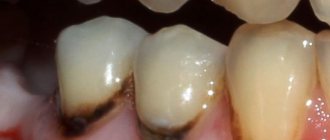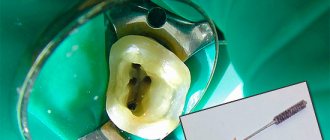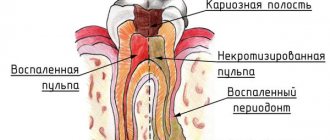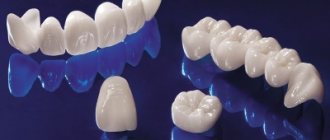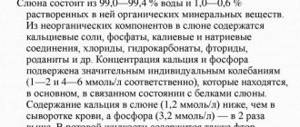Young root zones
The young root contains several sections that differ in their structure and functions. Even externally, 5 zones are clearly visible on the main, lateral and adventitious roots:
- root cap (case), or calyptra;
- cell division zone;
- stretch zone, or growth zone;
- zone of maturation (absorption, or absorption);
- venue area.
Between the last three zones the boundaries are clearly invisible.
Root zones
Root: root cap
It has no equivalent in the stems and consists of two types of thin-walled young educational cells:
- central , columnar (apical root meristem), which are constantly dividing and shifting to the periphery. They are called columella, or columns ;
- peripheral round ones, functioning for only a week, exfoliating while still alive and being replaced by new ones.
The root cap is clearly visible on large roots; its thickness is approximately the same in all plants, it is equal to 1 mm. Only parasitic plants and some aquatic inhabitants lack a root cap. Calyptra protects sensitive underlying educational tissues from soil particles and facilitates root penetration into the soil. If the old root cap is damaged or artificially removed, it is formed anew.
In the cells of the root cap, the Golgi apparatus secretes mucous substances in large quantities, which pass through the cell walls to the outside. Mucilage facilitates root penetration among soil particles.
Columella cells are also involved in the perception of gravity. They are designed in a special way. The nucleus in them is in the center, the EPS is at the periphery, and large vacuoles are absent. The lower columnar cells contain amyloplasts - plastids with starch grains that have crystalline properties. They gather on the sides of cells and provide direction for growth, guided by gravity. When a potted plant is laid on its side, the amyloplasts drift to the side closest to the source of gravity and the root bends in that direction.
The exact cause of the gravitational response of cells is unknown, but it is assumed that calcium ions in amyloplasts influence the distribution of growth hormone (auxin in this case) in the cells. The working hypothesis is that the electrical signal moves from columnar cells to cells closer to the division zone.
Root tip under a microscope
Root: cell division zone
The apical meristem is located in the center of the root tip, its area protected by the root cap. By analogy with a shoot, it is called a growth cone . On a living root it can be seen by the yellowish tint of the cells. They have this color because they do not have vacuoles. The apical meristem contains one or more initial cells , which continually divide and give rise to all the cells of the root.
Most of the activity in this zone occurs at the edges, where cells divide every 12 to 37 hours, peaking once or twice a day. Most of the initial (apical) cells are cuboidal with a small distance between each other. Ferns have only one initial in the shape of a pyramid (tetrahedron). Some club mosses also have one dividing cell. The group of cells in the middle of the root meristem is called the quiescent center. They divide rarely, with the help of turgor pressure they give elasticity to the root tip and forcefully push it between the soil particles.
In dicotyledonous angiosperms, the root apical meristem forms three layers. The root cap and epiblema (rhizoderm) are formed from the cells of the lower layer, the primary cortex is formed from the second layer, and the axial cylinder is formed from the third layer. But the anatomical and morphological differences between them will be invisible until they reach the maturation zone.
In monocots, the root apex differs in that the initials of the lower layer form only the root cap, and the rhizoderm differentiates from the uppermost layer of the periblem. The length of the division zone in dicotyledonous angiosperms is 1 mm.
Root division zone
Root: stretch zone
In the elongation zone, the cells of the primary meristem elongate. It looks smooth, transparent and light. With the help of this section, the root becomes longer. Cells grow by enlarging vacuoles. Small vacuoles coalesce until they occupy 90 percent or more of the entire cell. Above the elongation zone, the cells no longer enlarge. The mature parts of the root, with the exception of growth in thickness, remain constant throughout life. The length of the root elongation zone reaches several millimeters. In its upper section, cell differentiation begins, the rhizoderm is formed - the absorbent tissue of the root, etc.
Root: ripening zone, or absorption zone
The root lengthens due to the ripening zone. Cells elongated in the elongation zone differentiate in the maturation zone and become specific for the primary structure of the root. Although they are not visible until this stage, but as we already know, their fate was destined much earlier. The size of the absorption zone is several centimeters. The functions of this zone are: absorption of water with dissolved minerals, fixation of the root system in the soil, mechanical support of the root apex.
Surface cells mature into epiblema (rhizoderm) and include outgrowths - root hairs. A root hair is an extension of one rhizoderm cell. The root hair shell is thin, consists of cellulose and pectin and is covered on the outside with mucus, which facilitates the absorption of water and ions. As the root hair stretches, the entire cytoplasm of the cell of which it consists is concentrated at its apex, the nucleus and numerous dictyosomes, which synthesize mucus and substances for growing the cell membrane, move there. The rest of the outgrowth is occupied by a long vacuole. These are very active cells and their work requires a lot of plastic substances and energy. Therefore, they contain a large number of ribosomes and mitochondria.
The number of root hairs depends on the environmental conditions of the plant. For example, aquatic angiosperms do not have them at all. There can be many billions of root hairs on the root of a single land plant. Their total area can reach up to 37 cm². They significantly increase the surface area of the root. The length of the root hair of different plants ranges from 0.1 mm to 10 mm. For example, in sedges and grasses it is 3 mm. And the length of all the hairs of one root can be several kilometers.
Symbiotic bacteria capable of fixing nitrogen enter the roots of legume plants through root hairs. Root hairs appear and develop very quickly - within 1-2 days, but they do not work for long - their life is calculated in days, less often - weeks. As the root grows, the root hairs die and an absorption zone forms in a new area of the root. And in place of the suction zone, a conduction site is formed.
Root: venue area
This is the main part of the root that appears as the root hairs die. The rhizoderm becomes the exoderm, protecting the living cells of the conduction zone. In this area, the secondary structure of the root is formed due to the activity of lateral meristems, and conductive tissues are formed. Here lateral roots are formed, the cambium is laid, which ensures the growth of the organ in thickness.
Extracting roots from fractional numbers
Remember : any fractional number must be written as an ordinary fraction.
Following the property of the root of a quotient, the following equality is valid:
pqn = pnqn . Based on this equality, it is necessary to use the rule for extracting the root of a fraction: the root of a fraction is equal to dividing the root of the numerator by the root of the denominator.
Let's consider an example of extracting a root from a decimal fraction, since you can extract a root from an ordinary fraction using a table.
It is necessary to extract the cube root of 474, 552. First of all, let's imagine the decimal fraction as an ordinary fraction: 474, 552 = 474552 / 1000. From this it follows: 474552 1000 3 = 474552 3 1000 3. You can then begin the process of extracting the cube roots of the numerator and denominator:
474552 = 2 × 2 × 2 × 3 × 3 × 3 × 13 × 13 × 13 = (2 × 3 × 13) 3 = 78 3 and 1000 = 10 3, then
474552 3 = 78 3 3 = 78 and 1000 3 = 10 3 3 = 10.
We complete the calculations: 474552 3 1000 3 = 78 10 = 7, 8.
Primary root structure
In the division zone or slightly above, the boundaries between the meristems are clearly visible: the periblema (the outer section, derived from the middle layer of the initials) and the pleroma (the inner section, derived from the upper layer of the initials). While still retaining the character of educational tissues, the cells of these meristems differ in size and location.
From the periblema the primary cortex arises, the main part of which consists of living parenchyma cells with living membranes. A system of intercellular spaces is formed between the cells, through which gases necessary for root respiration circulate. In marsh and aquatic plants, the primary cortex turns into aerenchyma. Along with these, mechanical tissues appear that give rigidity to the root. Vigorous metabolism occurs in the cells of the cortex. Thanks to this, they perform several important functions:
- supply the rhizoderm with plastic substances, synthesizing them independently;
- participate in the conduction of certain substances;
- serve as a container for hyphae of symbiotic fungi;
- accumulate spare elements.
Endoderm
The innermost layer of the cortex is the endodermis , which surrounds the stele as a continuous layer. The endoderm often goes through three stages in its development. At the first stage, the membranes of its cells are thin, they fit tightly to each other, and thickenings appear on their transverse and radial walls. Seals are formed in them - Casparian spots or belts, in which a substance similar to suberin is deposited and lignification occurs. Casparian belts are impermeable to solutions. Primary endoderm at the first stage of development is found in the roots of all plants except club mosses. In many higher spores it remains this way throughout life. In most plants it acquires a secondary structure.
At the second stage of endoderm development, suberin is deposited on the entire inner surface of its walls. Only “permeable” cells remain non-lignified, through which solutions can penetrate. In most monocotyledonous and many dicotyledonous plants that do not have secondary thickening of roots, the endodermis can acquire a tertiary structure. It is characterized by strong thickening and lignification of all walls. Or only the walls facing outwards remain relatively thin. Passage cells are also present in this variant of the endoderm.
Primary structure of the root in the conduction zone
Exodermis
The outer layers of the cortex, underlying the rhizoderm, form another tissue characteristic of the root - exoderm . Initially, it functions as a tissue that regulates the passage of substances. After the rhizoderm dies, it appears on the surface of the root and becomes a protective protective tissue.
The exoderm is formed as a single-layer (less often several layers) epidermis, lying directly under the rhizoderm. At first it consists of living parenchyma cells tightly adjacent to each other. Soon a layer of suberin is deposited over their entire inner surface. But unlike cork, exodermal cells remain alive. Among the cells of this tissue, unsuberized cells remain through passage.
The exoderm is well expressed in the roots of annual plants, which retain their primary structure for a long time. In them it performs the function of integumentary tissue. In the roots of dicotyledonous and gymnosperm plants, a cambium quickly appears, the entire bark dies, and periderm .
Stele
The axial or central cylinder (stele) arises from the upper layer of the initials of the division zone (pleroma). Already close to the division zone, the outermost layer of the stele forms a pericycle , the cells of which retain the ability to divide for a long time. Lateral roots are formed in it, which is why the pericycle is often called the root layer. Pericycle cells participate in the formation of the secondary structure of the root; later they form the cambium and phellogen. Procambium cells are located under the pericycle.
Conducting tissues are formed inside the educational cells. Phloem (phloem) begins to develop before xylem, almost close to the division zone. The first sieve elements, devoid of accompanying cells, arise near the pericycle and constitute protophloem . The next phloem elements in time of occurrence are formed closer to the center of the root and constitute metaphloem . Protophloem and metaphloem together constitute the primary phloem.
Xylem (wood) begins to form later. Its first elements ( protoxylem ) are formed in the extension zone. They are represented by spiral and ringed elements. Protoxylem appears close to the pericycle and groups of its cells alternate with groups of phloem cells. The next xylem elements ( metaxylem ) develop towards the center of the root and are composed of reticulate or porous elements. In its development, xylem usually overtakes phloem and occupies the center of the root.
In a cross section, the primary xylem forms a star, between the rays of which phloem cells are located. A star can have a different number of rays - 2 or many. The alternation of xylem and phloem along the periphery of the stele constitutes a very characteristic feature in which the root differs sharply from the stem. In the very center of the root, in addition to xylem, there may be mechanical tissue and parenchyma.
Rooting Negative Numbers
If the denominator is an odd number, then the number under the root sign may be negative. It follows from this: for a negative number – a and an odd exponent of the root 2 n – 1, the following equality holds:
– a 2 × n – 1 = – a 2 × n – 1
The rule for extracting an odd power from negative numbers: to extract the root of a negative number, you must take the root of the opposite positive number and put a minus sign in front of it.
– 12 209 243 5 . First, you need to transform the expression so that there is a positive number under the root sign:
– 12 209 243 5 = 12 209 243 – 5
Then you should replace the mixed number with an ordinary fraction:
12 209 243 – 5 = 3125 243 – 5
Using the rule for extracting roots from an ordinary fraction, we extract:
3125 243 – 5 = – 3125 5 243 5
We calculate the roots in the numerator and denominator:
– 3125 5 243 5 = – 5 5 5 3 5 5 = – 5 3 = – 1 2 3
Brief summary of the solution:
– 12 209 243 5 = 12 209 243 – 5 = 3125 243 – 5 = – 3125 5 243 5 = – 5 5 5 3 5 5 = – 5 3 = – 1 2 3 .
Answer: – 12 209 243 5 = – 1 2 3 .
Secondary root structure
The root in the secondary structure has the following layers in cross section:
- periderm, most of which is occupied by cork;
- secondary cortex, consisting of secondary phloem and parenchyma cells;
- cambium – educational tissue;
- the central part, which includes secondary xylem, remnants of primary xylem and parenchyma rays.
The primary structure is maintained in the roots until thickening begins with the help of secondary lateral meristems: cambium and phellogen. The cambium occurs in the roots of gymnosperms and most dicotyledonous angiosperms between the xylem and phloem. It is formed from parenchyma cells, and later turns into a continuous cambial ring, supplemented by pericycle cells. It deposits secondary phloem outward and secondary xylem inward. In perennial woody plants, the roots can reach considerable thickness, but the annual rings in them are weakly expressed. Therefore, it is very difficult to determine the age of a root based on its anatomical structure.
The permanent tissues of the cortex cannot withstand the thickening of the root. They slough off and are replaced by secondary integumentary tissue - periderm . It is formed due to the work of phellogen (cork cambium). Phellogen is formed in the pericycle. Cortical cells, cut off from internal living tissues, die. The appearance of a cork gives the root a brown color. From this change one can learn about the location of the secondary structure of the root.
Literature:
- Botany with the basics of phytocenology: Anatomy and morphology of plants: Textbook for universities / T.I. Serebryakova, N.S. Voronin, A.G. Elenovsky and others - M.: ICC "Akademkniga", 2006
- Agafonova I.B. Biology of plants, fungi, lichens. 10-11 grades: textbook. allowance / I.B. Agafonova, V. I. Sivoglazov. – 2nd ed. stereotype. – M.: Bustard, 2008.
In what cases is the root extracted?
The nth root can be extracted from a number exactly if a can be represented as the nth power of some number b.
4 = 2 × 2, therefore, the square root of the number 4 can be exactly taken, which is 2
When the nth root of the number a cannot be represented as the nth power of the number b, then such a root is not extracted or of the root extracted accurate to any decimal place.
